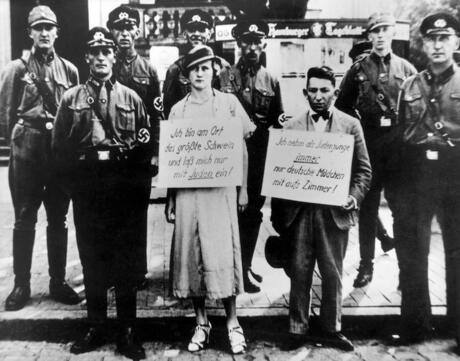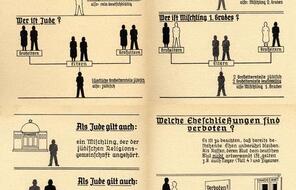
Laws and the National Community
Duration
One 50-min class periodSubject
- History
- Social Studies
Grade
6–8Language
English — USPublished
Overview
About This Lesson
In the previous lesson, students analyzed some of the dilemmas experienced by individual Germans during the National Socialist revolution in Germany. In this lesson, students will continue this unit’s historical case study by turning their attention to what happened after the revolution was complete and the Nazis firmly established control over Germany. Specifically, students will be introduced to the Nazis’ idea of a “national community” shaped according to their racial ideals, a concept students will continue to explore in two lessons that follow this one. While there were many ways in which the Nazis shaped and cultivated their ideal “national community,” in this unit students will look closely at three of those methods. In this lesson, they will examine the way the Nazis used laws to define who belonged to the “national community” and then separate those who did not belong. In future lessons, students will look at the Nazis’ use of propaganda and their creation of youth groups to shape German society.
Preparing to Teach
A Note to Teachers
Before teaching this text set, please review the following information to help guide your preparation process.
Lesson Plans
Activities
Assessment
Extension Activities
Materials and Downloads
Quick Downloads
Download the Files
Laws and the National Community
Do You Take the Oath?
Adding to Evidence Logs, 1 of 3
Unlimited Access to Learning. More Added Every Month.
Facing History & Ourselves is designed for educators who want to help students explore identity, think critically, grow emotionally, act ethically, and participate in civic life. It’s hard work, so we’ve developed some go-to professional learning opportunities to help you along the way.
Exploring ELA Text Selection with Julia Torres
On-Demand

Working for Justice, Equity and Civic Agency in Our Schools: A Conversation with Clint Smith
On-Demand

Centering Student Voices to Build Community and Agency
On-Demand











